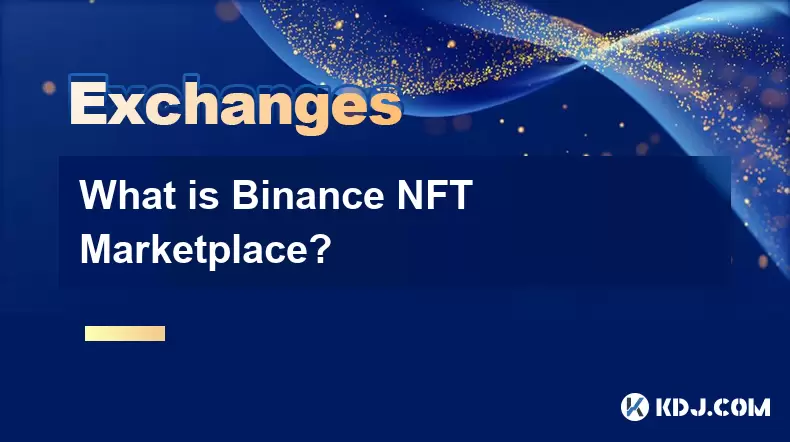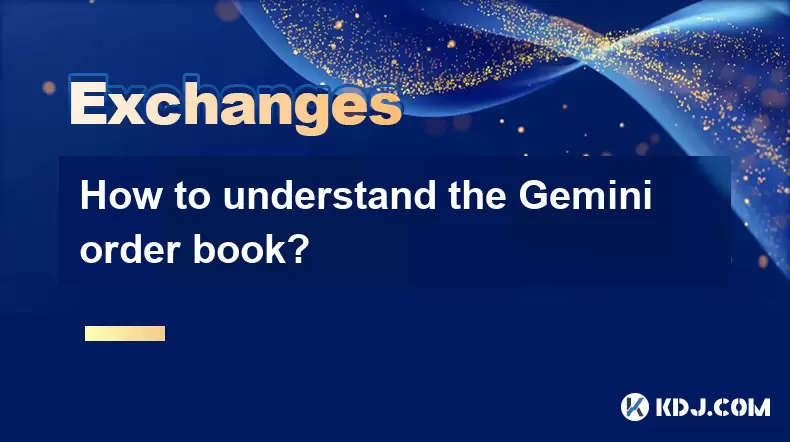-
 Bitcoin
Bitcoin $114400
1.32% -
 Ethereum
Ethereum $3499
2.20% -
 XRP
XRP $2.922
4.26% -
 Tether USDt
Tether USDt $0.0000
0.03% -
 BNB
BNB $752.6
1.53% -
 Solana
Solana $161.8
1.64% -
 USDC
USDC $0.9999
0.01% -
 TRON
TRON $0.3267
1.32% -
 Dogecoin
Dogecoin $0.1991
3.02% -
 Cardano
Cardano $0.7251
3.29% -
 Hyperliquid
Hyperliquid $38.32
3.36% -
 Stellar
Stellar $0.3972
7.58% -
 Sui
Sui $3.437
2.74% -
 Chainlink
Chainlink $16.29
3.65% -
 Bitcoin Cash
Bitcoin Cash $545.3
3.70% -
 Hedera
Hedera $0.2482
7.49% -
 Ethena USDe
Ethena USDe $1.001
0.03% -
 Avalanche
Avalanche $21.40
2.02% -
 Toncoin
Toncoin $3.579
1.56% -
 Litecoin
Litecoin $109.3
2.20% -
 UNUS SED LEO
UNUS SED LEO $8.951
-0.18% -
 Shiba Inu
Shiba Inu $0.00001220
2.75% -
 Polkadot
Polkadot $3.613
2.99% -
 Uniswap
Uniswap $9.173
3.78% -
 Monero
Monero $302.6
2.62% -
 Dai
Dai $0.0000
0.00% -
 Bitget Token
Bitget Token $4.320
1.52% -
 Pepe
Pepe $0.00001048
3.40% -
 Cronos
Cronos $0.1314
4.33% -
 Aave
Aave $259.4
3.54%
What is Binance NFT Marketplace?
Binance NFT Marketplace is a blockchain-based platform for buying, selling, and creating NFTs using BNB or other cryptos.
Jul 07, 2025 at 02:51 am

What is Binance NFT Marketplace?
Binance NFT Marketplace is a platform developed by the world’s largest cryptocurrency exchange, Binance, to facilitate the buying, selling, and creation of non-fungible tokens (NFTs). This marketplace allows users to interact with blockchain-based digital assets that represent ownership of unique items such as art, collectibles, music, virtual real estate, and more.
The core idea behind Binance NFT Marketplace is to provide a secure, scalable, and user-friendly environment for both creators and collectors. Unlike traditional marketplaces, this platform operates on blockchain technology, ensuring transparency and immutability in transactions. Users can mint their own NFTs or purchase existing ones using BNB (Binance Coin) or other supported cryptocurrencies.
How Does Binance NFT Marketplace Work?
To understand how the Binance NFT Marketplace functions, it's essential to break down its operational framework:
- Blockchain Integration: The marketplace primarily uses the Binance Smart Chain (BSC), which enables faster and cheaper transactions compared to other blockchains like Ethereum.
- Wallet Compatibility: Users must connect a compatible wallet such as Trust Wallet, MetaMask, or Binance Wallet to access the marketplace.
- Minting Process: Creators can upload their digital content (image, video, audio) and convert it into an NFT through a process known as minting. This involves paying a small gas fee on the BSC network.
- Buying and Selling: Once listed, NFTs can be purchased directly or through auctions. Sellers set prices or accept bids from interested buyers.
- Ownership Verification: Every transaction is recorded on the blockchain, allowing transparent verification of ownership and provenance.
These features ensure that every participant has a clear understanding of the asset's history and authenticity.
Key Features of Binance NFT Marketplace
Several notable features distinguish the Binance NFT Marketplace from other platforms:
- Low Transaction Fees: Thanks to the efficiency of Binance Smart Chain, users enjoy significantly lower gas fees than on Ethereum-based platforms.
- Wide Range of Supported Assets: From digital art to gaming items, the marketplace supports various types of NFTs.
- Launchpad for New Projects: Binance offers a dedicated NFT Launchpad where new creators and projects can debut their collections to a global audience.
- Staking and Rewards: Some NFTs on the platform offer staking opportunities, enabling holders to earn rewards.
- Exclusive Drops and Collaborations: Binance frequently collaborates with artists, celebrities, and brands to release limited-edition NFTs, creating excitement and exclusivity.
Each of these features enhances user engagement and adds value to the ecosystem.
How to Use Binance NFT Marketplace Step-by-Step
If you're new to Binance NFT Marketplace, here’s a detailed guide to help you get started:
- Create a Binance Account: Before accessing the NFT marketplace, you need a verified Binance account.
- Set Up a Compatible Wallet: Install and configure a wallet like Trust Wallet or MetaMask and link it to your Binance account.
- Fund Your Wallet: Transfer BNB or another supported cryptocurrency to your wallet to cover transaction costs.
- Navigate to Binance NFT: Access the NFT section via the Binance website or app.
- Browse or Mint NFTs: Explore available collections or start minting your own digital assets.
- Participate in Auctions or Buy Directly: Choose whether to place a bid or buy an NFT instantly at the listed price.
- Complete Transactions Securely: Confirm all transactions through your connected wallet and wait for blockchain confirmation.
Following these steps ensures a smooth experience when interacting with the platform.
Security Measures on Binance NFT Marketplace
Security is a top priority for any platform dealing with valuable digital assets. Here’s how Binance NFT Marketplace safeguards user data and funds:
- Two-Factor Authentication (2FA): Enabling 2FA adds an extra layer of protection to user accounts.
- Smart Contract Audits: Binance conducts regular audits of smart contracts used in the NFT minting and trading processes.
- Secure Wallet Integration: Only trusted and widely-used wallets are supported to minimize risks.
- Phishing Protection: Binance educates users about common scams and phishing attempts.
- KYC Verification: Identity verification helps prevent fraudulent activities and unauthorized access.
These security practices are designed to protect both novice and experienced users from potential threats.
Frequently Asked Questions
Q1: Can I use fiat currency to buy NFTs on Binance?
No, Binance NFT Marketplace only accepts cryptocurrencies such as BNB, BUSD, and other supported tokens. You will need to convert fiat to crypto before making purchases.
Q2: Are there royalties for creators on Binance NFT Marketplace?
Yes, creators can set royalty percentages for secondary sales. This means they earn a portion of future resales of their NFTs.
Q3: How do I verify if an NFT is authentic on Binance?
Every NFT’s ownership and transaction history are recorded on the Binance Smart Chain. You can view this information directly on the blockchain explorer linked to the NFT.
Q4: What happens if I lose access to my wallet after purchasing NFTs?
If you lose your wallet recovery phrase or private keys, you may permanently lose access to your NFTs. It’s crucial to store these details securely.
Disclaimer:info@kdj.com
The information provided is not trading advice. kdj.com does not assume any responsibility for any investments made based on the information provided in this article. Cryptocurrencies are highly volatile and it is highly recommended that you invest with caution after thorough research!
If you believe that the content used on this website infringes your copyright, please contact us immediately (info@kdj.com) and we will delete it promptly.
- Kaspa, HBAR, and Cold Wallet: A New York Minute on Crypto's Latest Moves
- 2025-08-04 09:11:54
- Ethereum Whale Watch: Selling Pressure and Price Volatility
- 2025-08-04 09:11:54
- XRP ETF Mania: Teucrium's Crypto Triumph and the Altcoin Frenzy
- 2025-08-04 09:30:13
- Crypto Wallet Scam: A $900K Loss & What You Need to Know
- 2025-08-04 09:35:13
- Dogecoin's Wild Ride: Elliott Wave, Stochastic RSI, and What's Next, Ya Know?
- 2025-08-04 09:40:12
- Shiba Inu (SHIB), Crypto Investments, and the Meme Coin Evolution: What's the Deal?
- 2025-08-04 09:45:17
Related knowledge

How to set and manage alerts on the Gemini app?
Aug 03,2025 at 11:00am
Understanding the Gemini App Alert SystemThe Gemini app offers users a powerful way to stay informed about their cryptocurrency holdings, price moveme...

How to use the Gemini mobile app to trade on the go?
Aug 04,2025 at 09:14am
Setting Up the Gemini Mobile AppTo begin trading on the go using the Gemini mobile app, the first step is installing the application on your smartphon...

What to do if you forgot your Gemini password?
Aug 04,2025 at 03:42am
Understanding the Role of Passwords in Gemini AccountsWhen using Gemini, a regulated cryptocurrency exchange platform, your password serves as one of ...

What are the websocket feeds available from the Gemini API?
Aug 03,2025 at 07:43pm
Overview of Gemini WebSocket FeedsThe Gemini API provides real-time market data through its WebSocket feeds, enabling developers and traders to receiv...

How to manage your portfolio on Gemini?
Aug 03,2025 at 10:36am
Accessing Your Gemini Portfolio DashboardTo begin managing your portfolio on Gemini, you must first log in to your account through the official websit...

How to understand the Gemini order book?
Aug 02,2025 at 03:35pm
What Is the Gemini Order Book?The Gemini order book is a real-time ledger that displays all open buy and sell orders for a specific cryptocurrency tra...

How to set and manage alerts on the Gemini app?
Aug 03,2025 at 11:00am
Understanding the Gemini App Alert SystemThe Gemini app offers users a powerful way to stay informed about their cryptocurrency holdings, price moveme...

How to use the Gemini mobile app to trade on the go?
Aug 04,2025 at 09:14am
Setting Up the Gemini Mobile AppTo begin trading on the go using the Gemini mobile app, the first step is installing the application on your smartphon...

What to do if you forgot your Gemini password?
Aug 04,2025 at 03:42am
Understanding the Role of Passwords in Gemini AccountsWhen using Gemini, a regulated cryptocurrency exchange platform, your password serves as one of ...

What are the websocket feeds available from the Gemini API?
Aug 03,2025 at 07:43pm
Overview of Gemini WebSocket FeedsThe Gemini API provides real-time market data through its WebSocket feeds, enabling developers and traders to receiv...

How to manage your portfolio on Gemini?
Aug 03,2025 at 10:36am
Accessing Your Gemini Portfolio DashboardTo begin managing your portfolio on Gemini, you must first log in to your account through the official websit...

How to understand the Gemini order book?
Aug 02,2025 at 03:35pm
What Is the Gemini Order Book?The Gemini order book is a real-time ledger that displays all open buy and sell orders for a specific cryptocurrency tra...
See all articles

























































































